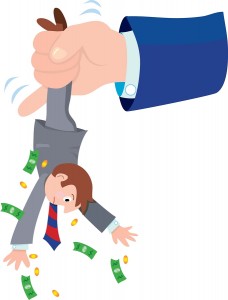Although government statistics suggest that the economy may be improving, debt still remains an important factor in millions of households across the country. In total, U.S. household consumer debt is reaching $12 trillion, a number that has actually increased three percent from last year, and the national average debt is $53,850.
On top of rising debt levels, households also have to face debt collectors, an incident that a lot of consumers hope they never have to face as they deal with a barrage of telephone calls and letters informing them that they have an unpaid bill still outstanding.

Based on 2013 records, the study found that 35 percent of individuals had been reported to collections for debts that average $5,178. Study authors say that the most important and interesting discovery of the report was that the trend has remained the same, which means each year a large number of households are still being contacted by debt collectors.
“Roughly, every third person you pass on the street is going to have debt in collections,” said Caroline Ratcliffe, a senior fellow at the Washington-based think tank, in a statement with the Associated Press. “It can tip employers’ hiring decisions, or whether or not you get that apartment.”
Study authors say there is one positive aspect: a share of a person’s income when it comes to credit card debt has fallen to its lowest level in more than a decade. Only 2.44 percent of credit card account holders are delinquent by 30 days or more.
Nevertheless, according to the Federal Reserve Bank of Philadelphia, the U.S. collections industry recovers about $50 billion each year in part to its 140,000 workers. A lot of the delinquent debt can be located in southern and western states, predominantly in Texas.
What is causing households from neglecting to pay their bills? Ratcliffe posits that stagnant wages are the primary culprit for households having difficulty keeping their heads above water.
Josh Bivens, research and policy director at the Economic Policy Institute, told the USA Today that this is further evidence to suggest that the Great Recession has still hampered Americans’ struggle to get out of the pitfalls of economic dilapidation.
“This is yet another really bad legacy of the Great Recession that we’re just nowhere near climbing all the way out of,” noted Bivens.
Credit Card Chaser sent out a news release listing the best ways to pay off credit card debt:
- Pay off credit cards from smallest to largest
- Pay off credit cards from highest interest rate to lowest
- Transfer high interest debt to a card with a lower rate
- Dip into savings to pay off debt
- Establish an emergency fund




